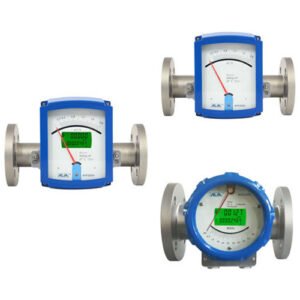Tips For Selecting The Right Pressure Transducer For Your Application

Overview
Pressure transducer is an integral part of most industrial applications. They allow for the monitoring and measurement of pressure, which is helpful for diagnosing problems with machinery or even confirming that your equipment is working properly. But with so many different types of Pressure Transducers and Transmitters available, how do you know which one will work best for your specific application?
In this article, we’ll go over some tips for selecting the right pressure transducer for your job. By following these simple steps, you’ll be able to make an informed decision about which model works best for you without having to put in too much extra effort!
Identify Your Application Requirements
Before you begin the process of selecting a pressure transducer, it’s important to identify your application requirements. This includes:
- Pressure range
- Accuracy/precision/resolution
- Media compatibility (liquid, gas or vacuum)
In addition to these factors, you’ll need to consider other aspects such as overload capacity and temperature compensation. A good rule of thumb is that if your application requires high accuracy and precision with large ranges, then an absolute pressure sensor would be ideal for your needs.
On the other hand, if you’re looking for something more economical but still want good performance across most types of media then an RTD or strain gauge may be better suited for your application
Consider Accuracy and Precision
Accuracy and precision are two different concepts. Accuracy is the closeness of a measurement to the true value, while precision is how close repeated measurements are to each other. When you’re selecting a pressure transducer, consider both accuracy and precision as they apply to your application.
If you need accurate measurements at all times but don’t mind if they vary slightly from one reading to another (e.g., measuring liquid levels), then an inexpensive sensor with high precision may be sufficient for your needs.
If, however, you require very precise readings that don’t deviate much from each other (e.g., measuring air pressure within an aircraft cabin), then it’s important for your sensor manufacturer or distributor.
Evaluate Pressure Range and Overload Capacity
When selecting a pressure transducer, you will want to make sure that the pressure range is appropriate for your application. For example, if you are using it in a high-pressure environment (over 2000 PSI), then you may need a higher resolution sensor with better accuracy and resolution.
If there is any chance of an overloading situation occurring during operation of your system, then it is important that the overload capacity of your chosen transducer meets or exceeds those conditions so that no damage occurs to either the transducer or its connection points due to excessive pressure being applied by these mechanisms.
Assess Media Compatibility
The first step in selecting a pressure transducer for your application is to assess media compatibility. Not all transducers are designed for use with the same media, and some may not be compatible at all. Check the specifications for each model to ensure that it can withstand conditions you intend on placing it under.
If you’re unsure about whether or not your desired transducer will work with your particular environment, contact professionals! They’re happy to provide further information on any of products’ capabilities and help you select one that fits every need.
Conclusion
We hope that you now have a better understanding of how to select the right pressure transducer for your application.
We recommend starting by identifying your requirements, then choosing an instrument that meets those needs while also providing the most value for money.
If you’re still unsure about which transducer type is right for your needs, contact professionals today!
Related Posts

Benefits of Investing in High-Quality Hydraulic Pumps for Dump Trailers

How EL-SIE-1 Temperature Data Logger Improve Measurement and Recording?

